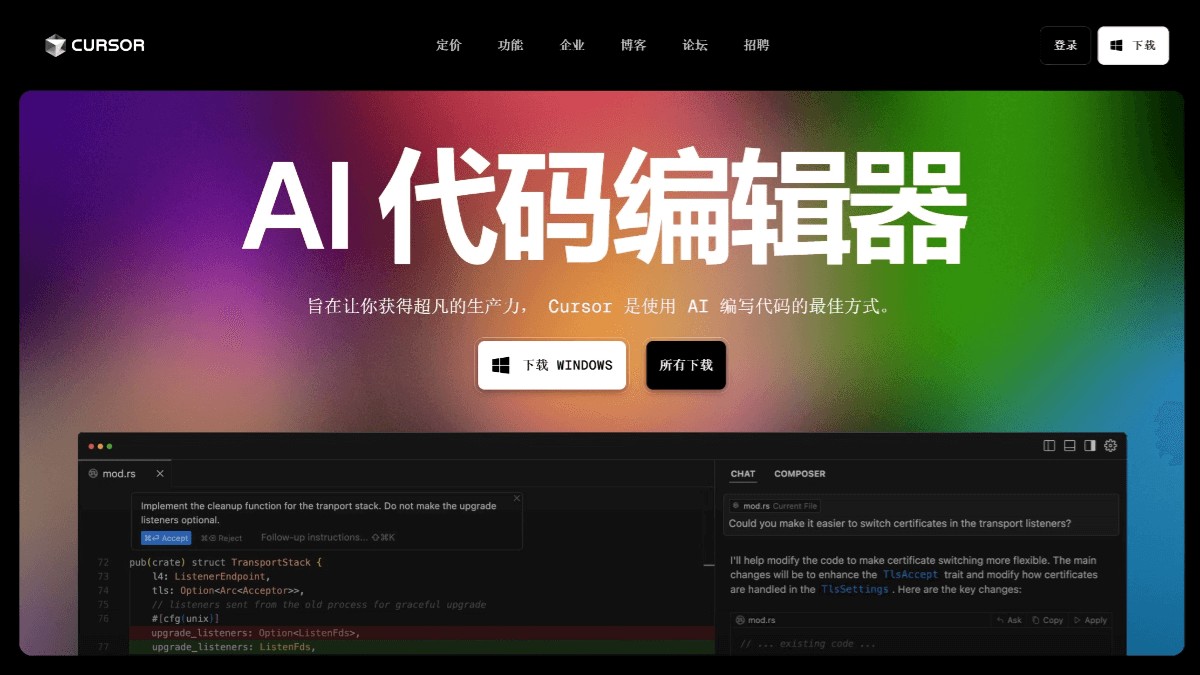
Artificial intelligence (AI) is profoundly changing the fields of engineering and design, especially in the modeling and optimization of complex structures. Among them, AI-generated 3D model compliant mechanism (Compliant Mechanism), as an innovative design method, is increasingly becoming an important research direction in the fields of mechanical engineering and product design. This article will delve into the basic concepts of compliant institutions, the application of AI in their model generation, and future development prospects.
What is a compliant agency?
A compliant mechanism is a mechanical structure that achieves motion and force transmission through elastic deformation of materials. Unlike traditional mechanisms that rely on rigid connections (such as hinges, gears, etc.), compliant mechanisms use deformations of materials such as bending, torsion, and stretching to complete their functions. This gives them unique advantages:
Integrated design: Reduce the number of parts and simplify the manufacturing and assembly process.
No friction and no wear: improve the reliability and service life of the mechanism.
Lightweight: compact structure, easier to achieve miniaturization and integration, suitable for applications with limited space.
Typical applications for compliant mechanisms include:
Micro mechanical systems: micro robots, sensors and actuators, etc.
Medical devices: surgical tools, implantable equipment, etc.
Aerospace: Micro-satellite structural design, etc.
How does AI enable 3D model generation that conforms to the organization?
The rapid development of artificial intelligence, especially machine learning and deep learning, has revolutionized the design of compliant organizations. AI plays a key role in 3D model generation and structural analysis by optimizing the design process and improving efficiency and accuracy.
Design Optimization and Automation: Traditional compliant mechanism design requires engineers to make extensive manual calculations and adjustments. AI uses technologies such as deep learning and reinforcement learning to automate design, quickly find optimal solutions among massive design solutions, and optimize structures, materials, and shapes to meet specific functional requirements. For example:
Optimal structure generation: AI automatically adjusts the shape and material distribution of the compliant mechanism to achieve optimal load-bearing performance.
Performance evaluation: AI simulates and predicts the performance of the design, including stress, deformation and response speed, helping designers quickly select the best solution.
Machine learning and structure prediction: Through machine learning algorithms, AI learns from a large amount of historical design data to predict and generate a compliant structure that meets the requirements. For example, by training neural networks, AI can identify the effects of different materials and geometries on the performance of compliant mechanisms, and then generate 3D models that meet specific needs, significantly shortening the product development cycle and reducing manual calculation and experimental costs.
Multi-parameter integrated optimization: AI can comprehensively consider multiple design parameters, such as material properties, load conditions and environmental factors, and automatically generate diversified design solutions. This integrated and optimized design method makes the compliant mechanism more flexible in practical applications and can adapt to different working environments and functional requirements.
Advantages of AI-driven compliant mechanism 3D model generation:
Efficiency and accuracy: AI processes a large amount of design data in a short time, quickly generates and optimizes 3D models, and is far more efficient than traditional methods.
Design innovation: AI's self-learning and automatic optimization capabilities can produce innovative design solutions that are difficult to achieve with traditional methods and expand the boundaries of compliant institutional design.
Cost Savings: AI significantly reduces manufacturing and development costs by reducing the trial and error process, optimizing design and material usage.
Powerful adaptability: AI can adjust the design according to different application requirements, meet personalized or complex technical requirements, and improve the adaptability and application scope of compliant institutions.
Practical applications of AI-driven compliant mechanism 3D models:
Microrobots and sensors: AI-generated compliant mechanism designs help microrobots perform tasks in complex environments while ensuring structural flexibility and stability, such as minimally invasive surgical robots in the medical field.
Wearable devices: The flexible design of compliant mechanisms gives them unique advantages in wearable devices (such as sensors and prosthetics) to better adapt to human movement.
Aerospace: The lightweight and high efficiency of the compliant mechanism make it promising in the aerospace field, especially in applications such as small satellites, sensors and detectors.
Automotive Engineering: AI-generated compliant mechanisms can be used in the automotive industry for shock-absorbing systems, adjustable support structures, and flexible connectors to improve vehicle performance and safety.
Future prospects and challenges:
AI shows great potential in adapting organizational design, but it also faces some challenges:
Material selection and optimization: Although AI can assist in design optimization, material selection and performance prediction are still complex in actual manufacturing.
Reliability of design: How to ensure the reliability and stability of AI-generated designs in long-term use requires further research.
Quality of AI training data: AI performance is highly dependent on the quality and quantity of training data, and a lack of high-quality data may lead to design bias.
With the continuous advancement of technology, AI-driven compliant mechanism design will shine in more fields and promote innovative development in all walks of life.
Summarize:
AI-powered 3D model-compliant mechanisms represent a revolution in mechanical design. By combining the powerful computing power of AI with a unique design method that conforms to the organization, it can not only improve design efficiency and accuracy, but also create more innovative solutions. As technology continues to mature, AI will be more widely used in compliant mechanism design, promoting continued progress in industry, medical care, aerospace and other fields.



